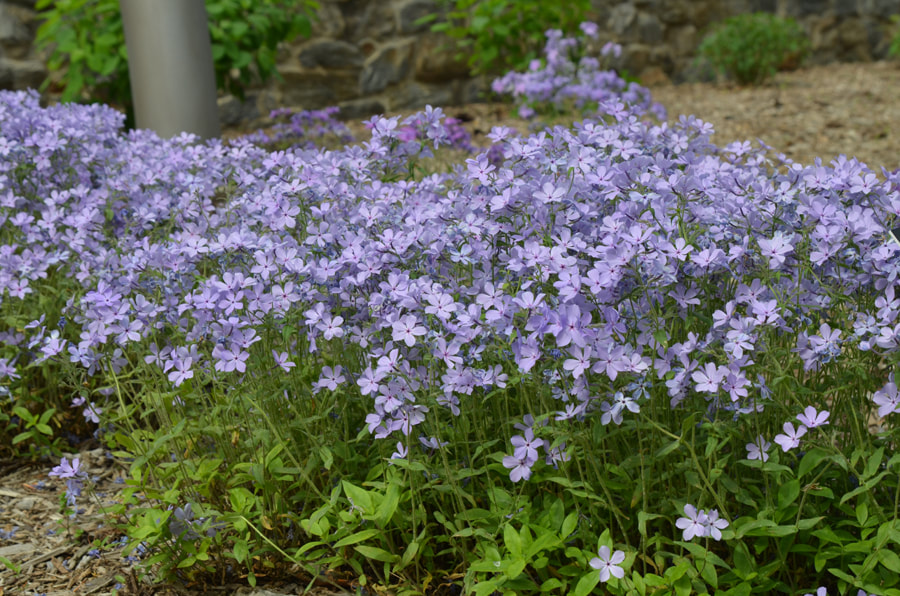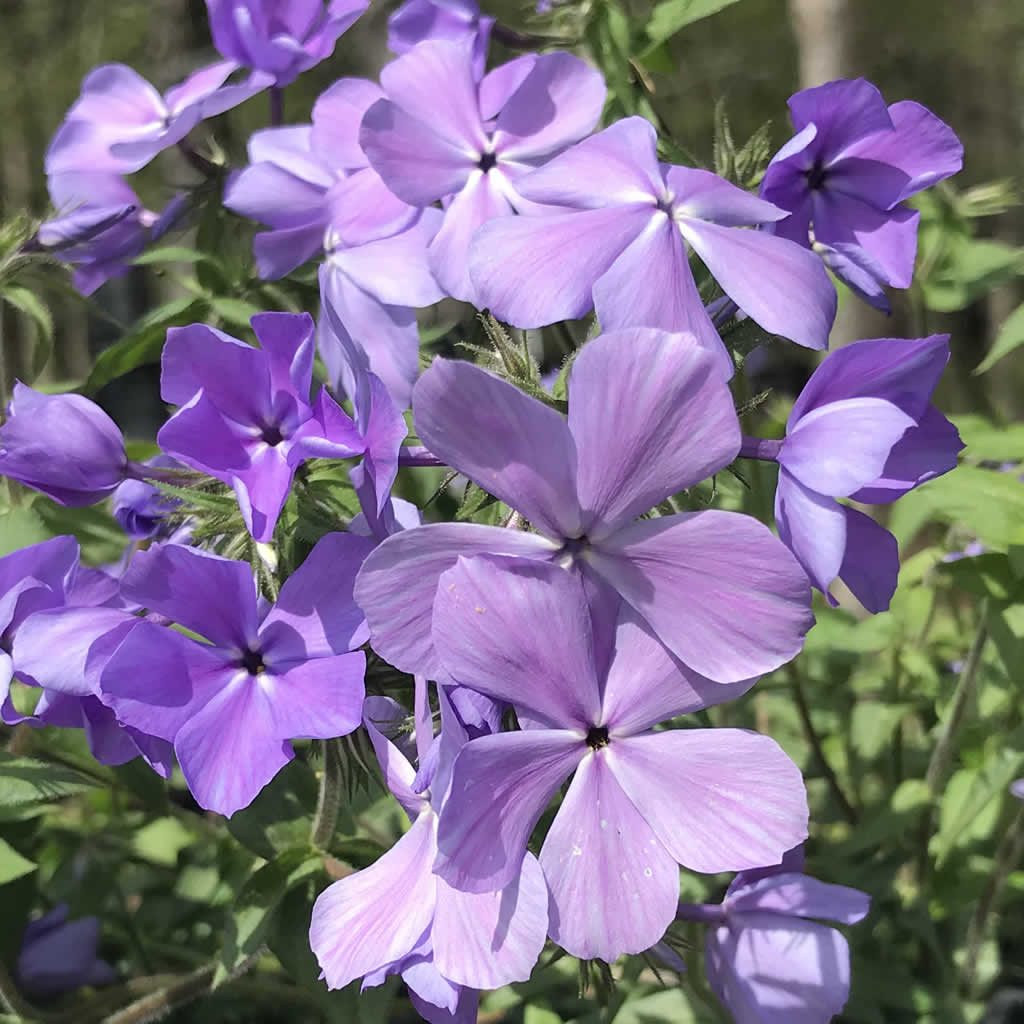Blue Moon
Phlox divaricata
The perfect phlox for shady areas, Wild Blue Phlox blooms for nearly a month in late spring and early summer. The fragrant flowers come in shades of pale lavender to blue, and occasionally pastel pink or white. The five-petalled tubular flowers are attractive to butterflies, clearwing moths, and hummingbirds.
The blooms are followed by rounded green fruits that eventually dry to seed capsules which split open to release the small black seeds. Blue Phlox does self-sow, but not aggressively, and the seedlings are easily transplanted. The flowering stems will die-back after the plant has produced seed, leaving a mound foliage to produce and store energy for the following year. The expired foliage tends to blend into its surroundings, and special care may be needed to learn to recognize and avoid pulling them.
Phlox divaricata grows best in light to medium shade and rich, moist, well-drained soils, but it is adaptable and tolerates both dry and clay soils. Once established, it is drought tolerant. Include it in native woodland gardens, naturalized areas, shaded rock gardens or an informal low border. Other common names include Woodland Phlox, Sweet William.
The perfect phlox for shady areas, Wild Blue Phlox blooms for nearly a month in late spring and early summer. The fragrant flowers come in shades of pale lavender to blue, and occasionally pastel pink or white. The five-petalled tubular flowers are attractive to butterflies, clearwing moths, and hummingbirds.
The blooms are followed by rounded green fruits that eventually dry to seed capsules which split open to release the small black seeds. Blue Phlox does self-sow, but not aggressively, and the seedlings are easily transplanted. The flowering stems will die-back after the plant has produced seed, leaving a mound foliage to produce and store energy for the following year. The expired foliage tends to blend into its surroundings, and special care may be needed to learn to recognize and avoid pulling them.
Phlox divaricata grows best in light to medium shade and rich, moist, well-drained soils, but it is adaptable and tolerates both dry and clay soils. Once established, it is drought tolerant. Include it in native woodland gardens, naturalized areas, shaded rock gardens or an informal low border. Other common names include Woodland Phlox, Sweet William.

